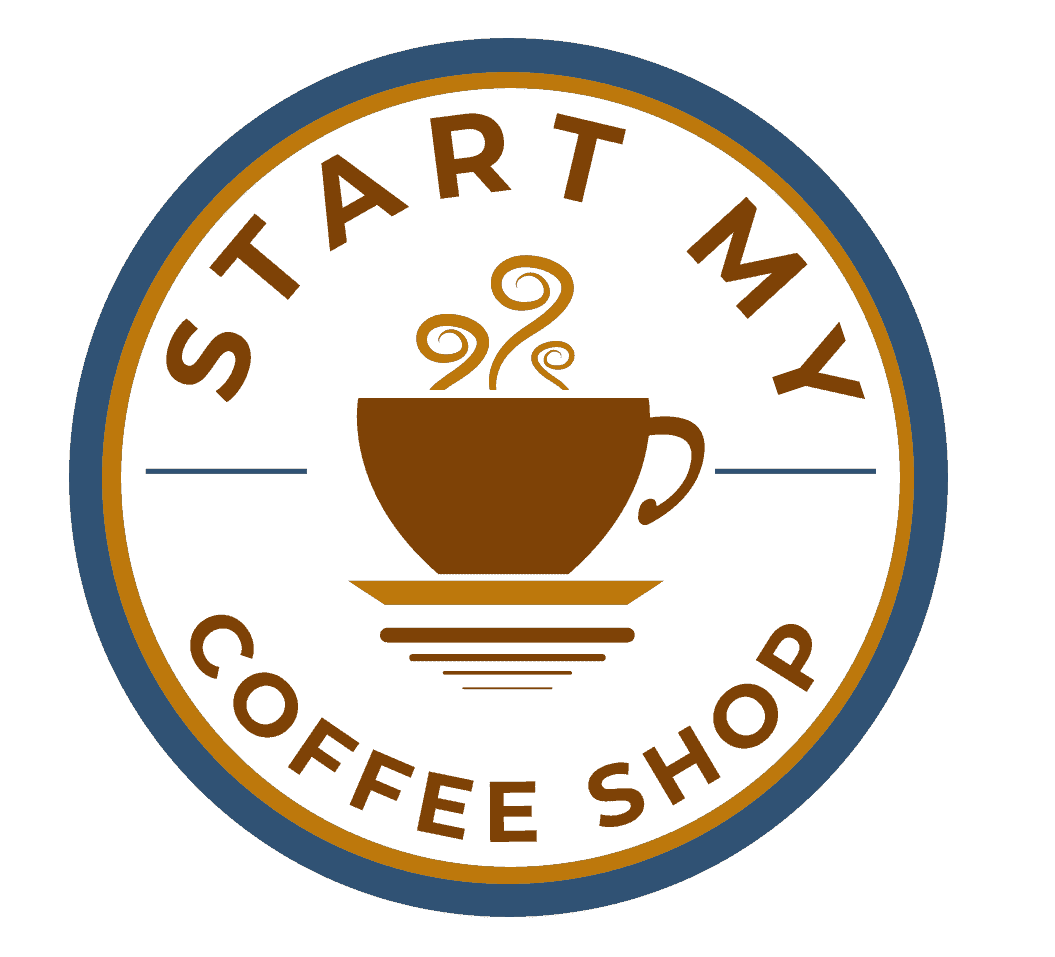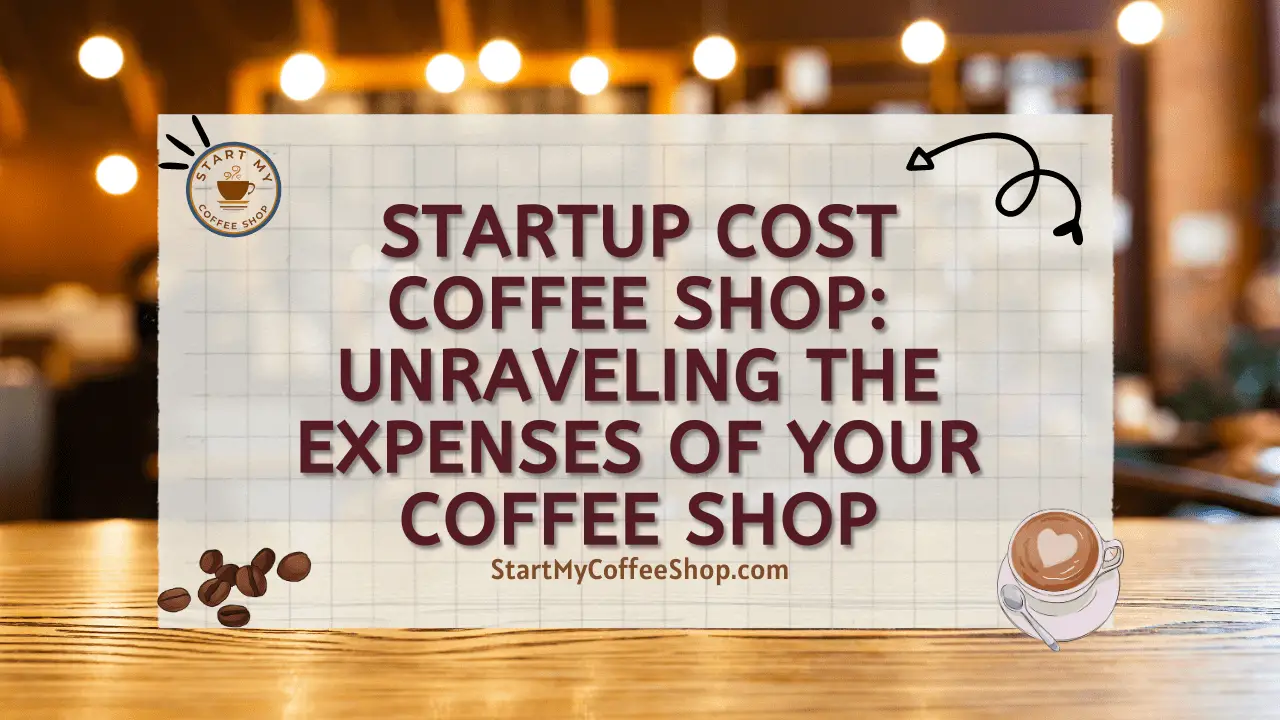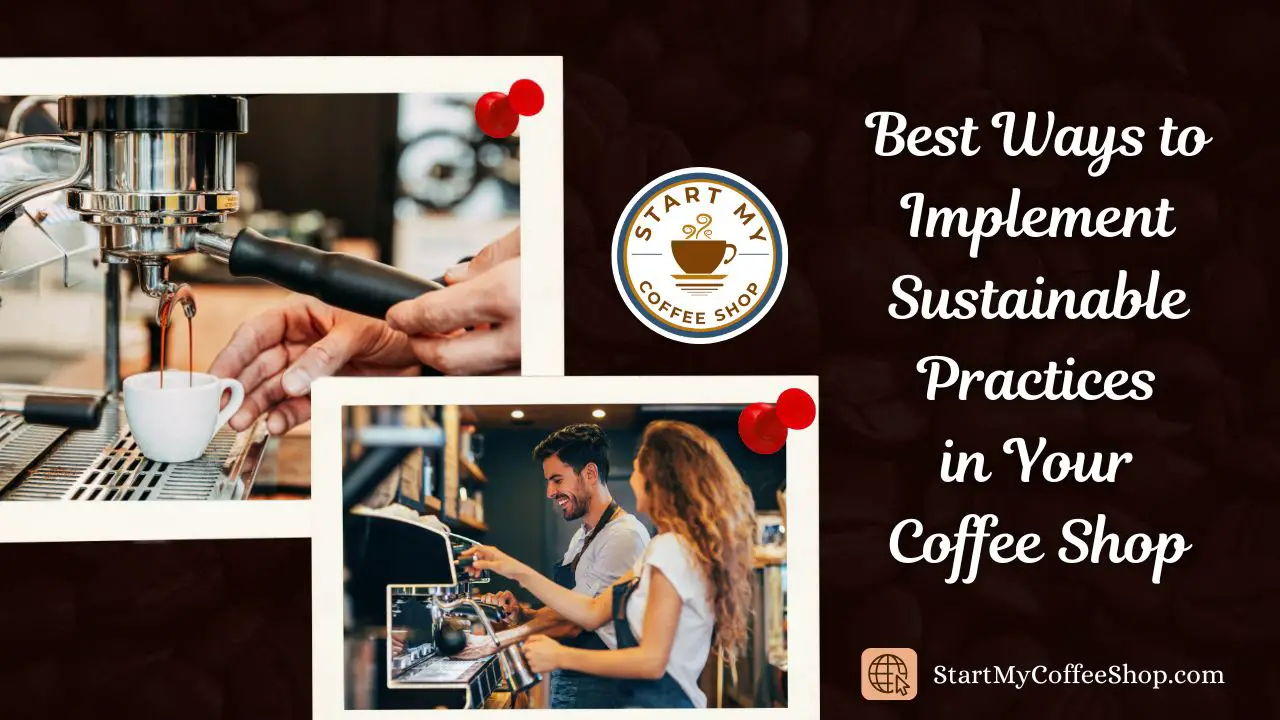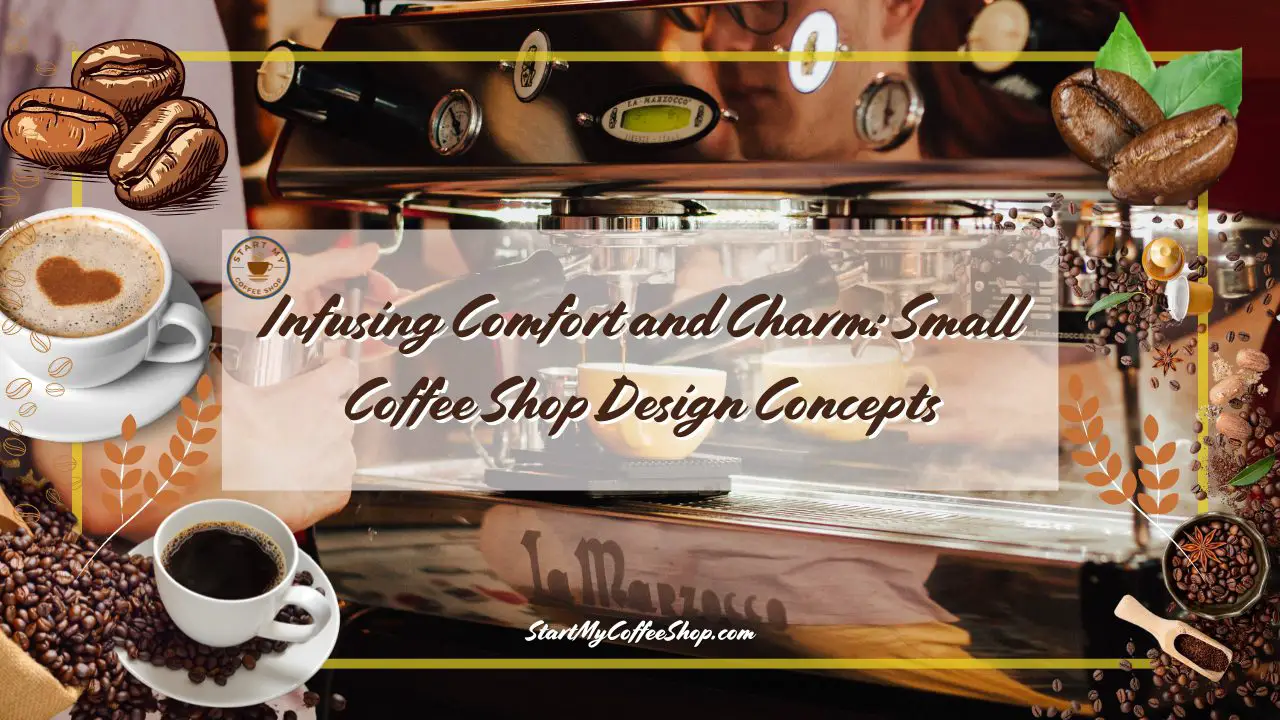Starting your coffee shop is an exciting venture, but it requires careful planning, especially when it comes to estimating startup costs. From the cost of equipment and renovations to permits and initial inventory, there are several factors to consider.
Startup costs for a coffee shop can vary, but they typically range from $80,000 to $300,000. Factors such as location, size, equipment, renovations, permits, and initial inventory influence the overall expenses.
In this article, I will delve into the various components that contribute to the startup costs of a coffee shop.
1. Location and Renovations
 While finding a spot with high foot traffic and visibility is crucial, it often comes with a higher price tag. When estimating startup costs, it’s essential to consider various expenses associated with securing the ideal location. These expenses may include lease or purchase agreements, security deposits, and any necessary renovations or remodeling to make the space suitable for your coffee shop.
While finding a spot with high foot traffic and visibility is crucial, it often comes with a higher price tag. When estimating startup costs, it’s essential to consider various expenses associated with securing the ideal location. These expenses may include lease or purchase agreements, security deposits, and any necessary renovations or remodeling to make the space suitable for your coffee shop.
Creating an inviting and functional space involves factoring in costs such as interior design, flooring, painting, plumbing, electrical work, and fixtures. The interior design should align with your brand image and provide a welcoming ambiance for customers. Costs can vary depending on the level of customization and the materials chosen.
Renovations or remodeling might be necessary to accommodate specific needs, such as installing a commercial kitchen, creating a dedicated seating area, or optimizing the layout for efficient workflow. Additionally, you may need to address any structural or safety requirements stipulated by local regulations.
By carefully considering these location-related expenses, you can allocate a realistic budget for securing a prime spot and transforming it into a coffee shop that attracts and delights customers.
2. Equipment and Furnishings
Equipping your coffee shop with the right tools is not only essential for delivering quality products and services but also for ensuring efficient operations and customer satisfaction. When estimating startup costs, it is crucial to allocate a budget for a range of essential items that form the backbone of your coffee shop’s daily activities.
The key equipment includes espresso machines, grinders, brewers, refrigerators, blenders, and POS (Point of Sale) systems. These items are vital for preparing and serving your menu offerings effectively. Espresso machines and grinders, for instance, directly impact the quality and consistency of your coffee. Investing in high-quality equipment ensures that you can consistently deliver excellent beverages to your customers.
In addition to the larger equipment, it is equally important not to overlook the smaller items that contribute to the overall functionality and ambiance of your coffee shop. Coffee mugs, furniture, countertops, display cases, and signage are all crucial elements that should be factored into your budget. Coffee mugs should be durable and aesthetically pleasing, enhancing the customer’s experience.
Thoughtfully chosen furniture creates a comfortable and inviting atmosphere, encouraging customers to stay and enjoy their coffee. Countertops and display cases should be practical, facilitating efficient workflow and product presentation. Well-designed signage not only attracts attention but also communicates your brand effectively.
While it may be tempting to cut corners on equipment costs, it is wise to invest in high-quality, durable items. While the upfront investment may be higher, such equipment tends to have better performance, reliability, and longevity.
This saves you money in the long run by reducing maintenance, repair, and replacement costs. Investing in durable coffee mugs and furniture also ensures customer satisfaction, as they contribute to a pleasant experience. Satisfied customers are more likely to become repeat customers and share positive recommendations with others.
By careful budgeting for both essential and smaller items, you can equip your coffee shop with the right tools to deliver exceptional products and services. Furthermore, investing in high-quality, durable equipment and materials sets the foundation for a stable and sustainable coffee shop, ultimately saving you money in the long term while ensuring customer satisfaction and loyalty.
3. Permits and Licenses
 Operating your coffee shop legally requires obtaining the appropriate permits and licenses. It is essential to thoroughly research the specific requirements in your location to ensure compliance with local regulations. The permits and licenses you may need can include health permits, food service licenses, zoning permits, and if you plan to offer alcoholic beverages, alcohol licenses.
Operating your coffee shop legally requires obtaining the appropriate permits and licenses. It is essential to thoroughly research the specific requirements in your location to ensure compliance with local regulations. The permits and licenses you may need can include health permits, food service licenses, zoning permits, and if you plan to offer alcoholic beverages, alcohol licenses.
Health permits are necessary to demonstrate that your coffee shop meets health and safety standards, ensuring that the food and beverages you serve are prepared and handled properly. Food service licenses certify that you comply with the regulations governing the preparation, storage, and sale of food items. Zoning permits ensure that your coffee shop is appropriately situated within the designated commercial zones of your area.
If you intend to serve alcoholic beverages, you will need to obtain alcohol licenses, which come with their own set of requirements and regulations. These licenses are essential to legally sell and serve alcoholic drinks to customers.
It is important to note that the costs associated with permits can vary depending on your region. Some locations may have higher fees or additional requirements, so it is crucial to research and include these costs in your budget planning. Failing to obtain the necessary permits and licenses can result in fines, penalties, or even the closure of your coffee shop, so it is essential to prioritize compliance from the beginning.
Read more about Startup Cost Coffee Shop: The Art of Brewing and Budgeting
4. Initial Inventory and Supplies
Stocking up on essential supplies is a critical aspect of opening a coffee shop. As you plan your startup costs, it’s important to estimate your initial inventory needs based on projected sales volume and menu offerings. This includes items such as coffee beans, tea leaves, syrups, milk, pastries, and other supplies that are crucial to your daily operations.
To estimate your inventory needs, consider factors such as the size of your customer base, the demand for different menu items, and any seasonal variations in preferences. It’s helpful to analyze market trends and conduct market research to gain insights into customer preferences and consumption patterns. This information will guide you in making informed decisions about the quantity and variety of supplies to stock.
Collaborating with suppliers is a strategic approach to managing your startup costs. Establishing relationships with reliable suppliers who offer quality products can help you negotiate favorable prices and payment terms. Consider reaching out to multiple suppliers to compare prices, product quality, and delivery schedules. Building strong relationships with suppliers can also lead to potential discounts, promotional offers, or assistance with bulk ordering.
Negotiating favorable payment terms, such as extended payment periods or discounts for early payments, can significantly impact your cash flow during the early stages of your coffee shop. Discussing these options with your suppliers and working out mutually beneficial arrangements can help you manage your startup costs more effectively.
Furthermore, it’s essential to strike a balance between stocking enough inventory to meet customer demand without excessive waste or overstocking. Implementing effective inventory management systems, such as regular monitoring, forecasting, and adjusting order quantities based on actual sales, can help you optimize your inventory levels and reduce unnecessary expenses.
By carefully estimating your initial inventory needs, working with suppliers to negotiate favorable terms, and implementing efficient inventory management practices, you can effectively manage your startup costs and ensure a steady supply of the necessary items for your coffee shop.
5. Marketing and Branding
Effective marketing plays a vital role in attracting customers to your coffee shop and establishing a strong brand presence. When estimating your startup costs, it is crucial to allocate a budget for various marketing activities that will help promote your coffee shop and reach your target audience.
Branding is a key component of marketing. Allocate funds for logo design, brand identity development, and creating a consistent visual theme that reflects your coffee shop’s unique personality. Additionally, consider investing in eye-catching signage that grabs attention and communicates your brand to passersby.
In today’s digital age, having a strong online presence is essential. Allocate a portion of your marketing budget to develop a professional and user-friendly website. This online platform will serve as a hub of information for potential customers, showcasing your menu, location, and unique offerings. Furthermore, invest in social media campaigns to engage with your target audience, build a community, and promote your coffee shop’s specials, events, or promotions.
Collaborating with local influencers or hosting community events can also generate buzz and attract customers. Partnering with influencers who align with your brand can help you reach a wider audience and gain credibility. Hosting community events, such as coffee-tasting sessions, workshops, or live music performances, creates a sense of community and gives people a reason to visit your coffee shop.
Allocate funds for promotional materials like flyers, brochures, business cards, and loyalty cards, which can be distributed locally or included in customer orders. These materials serve as a tangible reminder of your coffee shop and encourage repeat business.
6. Employee Salaries and Training
 When estimating the startup costs for your coffee shop, it’s important to include the expenses associated with hiring and training staff members. The performance of your coffee shop relies on having a skilled and motivated team. Allocating a budget for staffing-related costs is essential to ensure smooth operations and exceptional customer service.
When estimating the startup costs for your coffee shop, it’s important to include the expenses associated with hiring and training staff members. The performance of your coffee shop relies on having a skilled and motivated team. Allocating a budget for staffing-related costs is essential to ensure smooth operations and exceptional customer service.
Consider factors such as wages, benefits, and payroll taxes when budgeting for staff expenses. The wages you offer should be competitive to attract and retain qualified employees. Take into account any legal requirements for minimum wages in your region. Benefits such as healthcare, retirement plans, or paid time off should also be considered, as they can be important incentives for employees and contribute to their job satisfaction.
Uniforms are another aspect to consider when calculating staff costs. Providing branded uniforms not only creates a professional and cohesive image for your coffee shop but also enhances customer experience. Budgeting for initial uniform purchases and replacements over time is essential.
Ongoing training expenses should also be factored into your budget. Training programs ensure that your staff members have the necessary knowledge and skills to excel in their roles. This can include barista training, customer service training, and even professional development opportunities. Investing in training shows your commitment to employee growth and helps maintain a high level of quality and consistency in your coffee shop.
By including staffing-related costs in your budget, you can ensure that you have the resources to attract and retain a capable team. Well-trained and motivated employees contribute to the overall achievement of your coffee shop by providing excellent customer service and maintaining a positive work environment.
Summary
Opening a coffee shop requires careful financial planning and an understanding of the startup costs involved. By considering factors such as location and renovations, equipment and furnishings, permits and licenses, initial inventory and supplies, marketing and branding, and employee salaries and training, you can create a comprehensive budget for your coffee shop startup.
Remember to research industry benchmarks, consult with experienced professionals, and allow for contingencies in your financial plan. With thorough preparation and a solid budget in place, you’ll be well on your way to turning your dream of owning a great coffee shop into a caffeinated reality.
Frequently Asked Questions
Question: Do I need a business plan to estimate the startup costs?
Answer: It helps you outline your financial projections, identify expenses, and secure funding. A business plan serves as a roadmap for your coffee shop’s achievement and aids in estimating the startup costs accurately.
Question: How can I save money on equipment without compromising quality?
Answer: Consider purchasing refurbished or used equipment from reputable suppliers. Additionally, compare prices, negotiate with vendors, and research financing options to manage equipment costs effectively.
Question: What are some strategies to control ongoing operational expenses?
Answer: To control ongoing expenses, consider implementing efficient inventory management systems to reduce waste and optimize supply ordering. Train your staff to minimize errors and reduce labor costs.
To learn more on how to start your own coffee shop checkout my startup documents here
Please note: This blog post is for educational purposes only and does not constitute legal advice. Please consult a legal expert to address your specific needs.

Hi! I’m Shawn Chun
My adventure in coffee began when I first launched my first coffee shop back in the early 2000s. I had to figure out so many things on my own and to make it worse within 2 years of opening two large corporate coffee chains moved in just blocks away from me!
As I saw smaller and even some larger coffee shops in the neighborhood slowly lose customers to these giant coffee chains and slowly close up shop, I knew that I had to start getting creative…or go out of business.
I (like you may be) knew the coffee industry well. I could make the best latte art around and the foam on my caps was the fluffiest you have ever seen. I even had the best state-of-the-art 2 group digital Nuova Simonelli machine money could buy. But I knew that these things alone would not be enough to lure customers away from the name brand established coffee shops.
Eventually, through lots of trial and error as well as perseverance and creativity I did find a way to not only survive but also thrive in the coffee/espresso industry even while those corporate coffee chains stayed put. During those years I learned to adapt and always faced new challenges. It was not always easy, however, in the end, I was the sole survivor independent coffee shop within a 10-mile radius of my location. Just two corporate coffee chains and I were left after that year. All told the corporate coffee chains took down over 15 small independent coffee shops and kiosks and I was the last one standing and thriving.
Along the years I meet others with the same passion for coffee and I quickly learned that it is not only “how good a barista is” that makes a coffee shop successful, but the business side of coffee as well.
Hence why I started this website you are on now. To provide the tools and resources for up and coming coffee shop owners to gain that vital insight and knowledge on how to start a coffee shop successfully.
Stick around, browse through my helpful blog and resources and enjoy your stay! With lots of LATTE LOVE!
Shawn






